Bodywork Paint Hardeners for your car repairs available at Carross

Bodywork Paint Hardener
-
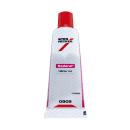 0909Raderal 0909 Hardener50g
0909Raderal 0909 Hardener50g -
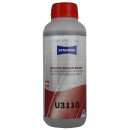 2078012Etching Activator Thinner1L
2078012Etching Activator Thinner1L -
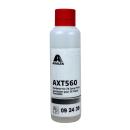 2082918Putty HardenerPolyester spray 50ml
2082918Putty HardenerPolyester spray 50ml -
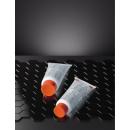 2900.0050BPO Putty resin HardenerRed - 50g tube
2900.0050BPO Putty resin HardenerRed - 50g tube -
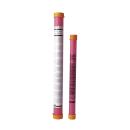 2910.0040BPO Putty resin HardenerRed - 40g cartridge
2910.0040BPO Putty resin HardenerRed - 40g cartridge -
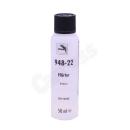 948-22Putty Hardener0.05L
948-22Putty Hardener0.05L -
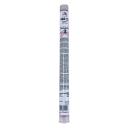 948-52Hardenerfor Putty
948-52Hardenerfor Putty -
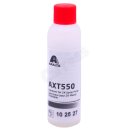 AXT550Putty HardenerSprayable 799R - 50ml
AXT550Putty HardenerSprayable 799R - 50ml
︾
Leading brands of Paint Hardener for your car repairs
Everything you need to know about using bodywork Hardener :
Using bodywork hardener is an important step in the preparation and application of car paint. Hardener is an essential component in some body paint and Clearcoat formulations, helping to ensure a complete cure and long-lasting finish. Here's a step-by-step guide on how to use Body Hardener:
What you need to use Paint Hardener:
Paint or Clearcoat: Choose a product that is compatible with the Hardener.
Bodywork hardener: Make sure you use the hardener recommended by the paint or Clearcoat manufacturer.
Bodywork Thinner (if necessary): Some products may require the addition of Thinner according to the manufacturer's specifications.
Paint spray gun: Use a quality spray gun for uniform application.
Air compressor: To supply the paint spray gun.
Mixing buckets: For measuring and mixing components.
Personal Protective Equipment (PPE): Wear gloves, coveralls, respirator and goggles.
Steps for using Body Hardener:
Read the manufacturer's instructions:
Before you begin, familiarise yourself with the paint and Hardener manufacturer's instructions. Each product may have specific requirements.
Prepare the paint or Clearcoat:
Shake the paint or Clearcoat well before use to ensure even pigment distribution.
Measure the Hardener:
Use measuring cups to measure out the correct amount of Body Hardener according to the manufacturer's recommendations. Follow the indicated proportions exactly.
Add the Hardener to the paint or Clearcoat:
Pour the measured Hardener into the container containing the paint or Clearcoat. Be sure to empty the measuring cup completely to get the right proportion.
Mix thoroughly:
Use a clean stirrer to mix the Hardener and the paint or Clearcoat. Stir vigorously for several minutes to ensure even distribution of the Hardener.
Add Thinner (if necessary):
Some products may require the addition of Thinner to adjust viscosity. Consult the manufacturer's instructions to determine if the addition of Thinner is necessary and follow the recommendations.
Filter the paint:
Use a paint filter to remove any unwanted particles that could affect the finish. Pour the filtered paint into the spray gun.
Adjust the paint gun:
Adjust the air pressure of the compressor and the Nozzle of the paint gun according to the manufacturer's recommendations.
Apply the paint or Clearcoat:
Apply body paint or Clearcoat to the prepared surface using even strokes and criss-cross passes to achieve even coverage.
Allow to dry as recommended:
Follow the drying times indicated by the manufacturer. Some products may require flash times between coats.
Repeat if necessary:
For some applications, several coats may be required. Repeat the process, respecting the drying times between coats.
Clean equipment:
Thoroughly clean the paint gun and accessories after use following the manufacturer's instructions.
Correct use of Bodywork Hardener will help to ensure a quality finish, optimum adhesion and long-term durability of the body paint or Clearcoat. Follow the manufacturer's instructions carefully to ensure optimum results.
The different types of bodywork hardener :
Bodywork hardeners are essential components in the preparation of automotive paints, clearcoats and putties. They influence the curing process, the speed of drying and the final properties of the coating. Here is an explanation of the different types of bodywork hardeners, based on their curing speed, their specific applications and the products they are used with:
Slow hardener:
Slow Hardener is formulated to allow a longer working time, ideal in conditions where a more deliberate application is required. It is often used for jobs requiring a meticulous finish.
Standard Body Hardener:
Standard Hardener is a compromise between fast and slow. It is suitable for most common application situations and offers a balance between working time and curing time.
Fast Body Hardener:
Fast Hardener significantly speeds up the curing process, reducing the time needed between coats and enabling a faster finish. It is often used in environments where speed is crucial.
Bodywork Hardener for hydro bases:
Hydro bases are water-based paints. Hardeners specific to these paints ensure adequate hardening while respecting the water-based nature of the base. They help create a durable, resistant finish.
MS Bodywork Hardener (One-component silicone):
MS Hardeners are used with hybrid polymer-based one-component putties. They are renowned for their adhesion, flexibility and durability. These hardeners are often used in applications requiring excellent weather resistance.
Multipurpose Body Hardener :
Multi-purpose Hardeners are designed to be compatible with different types of paint, Clearcoat or Putty. They offer flexibility of use in a variety of bodywork applications.
Bodywork Hardener for Putty:
Bodywork putties often require specific hardeners to achieve optimum adhesion, high resistance and complete curing. These hardeners are formulated to meet the specific requirements of filler putties.
Bodywork Hardener for Clearcoat :
Hardeners specific to bodywork Clearcoats are formulated to ensure maximum durability, scratch and weather resistance, and a clear, glossy finish.
Each type of Hardener is adapted to specific application conditions and particular products. It is crucial to follow the recommendations of the paint, Clearcoat or putty, as well as those of the Hardener, to ensure optimum performance and long-lasting results.
Bodywork Hardener for Ready to use colour :
When it comes to preparing a Ready to use colour in car bodywork, the choice of Hardener plays a crucial role in the paint mixing and curing process. Ready to use colours are often formulated specifically to match a particular colour, and the Hardener used must be compatible with this formulation.
Questions about applying bodywork Hardener :
When it comes to using bodywork hardeners, several questions frequently emerge among bodywork professionals. Here is a list of common questions about body hardeners:
What is a bodywork hardener and what role does it play in car paintwork?
Bodywork hardeners are chemical components added to paints, varnishes and Clearcoats to promote hardening and ensure the strength of the coating.
How do I choose the right bodywork Hardener for a specific project?
The choice of Hardener depends on the type of paint, the application conditions, the desired curing speed and other factors specific to the project.
What's the difference between slow, standard and fast hardeners?
Slow hardeners offer a longer working time, standard hardeners offer a balance between working time and curing, while fast hardeners speed up the process.
Are bodywork hardeners specific to a particular brand of bodywork paint?
Some hardeners are formulated to be compatible with specific brands of paint, but others can be more versatile.
How do I mix bodywork hardener with paint or Clearcoat correctly?
It's essential to follow the proportions recommended by the manufacturer. Use measuring cups and shake the mixture well to ensure even distribution.
What are the advantages of isocyanate-free bodywork hardeners?
Isocyanate-free hardeners are perceived as being safer for the environment and users' health, as they do not contain potentially harmful compounds.
Can any hardener be used with any bodywork paint?
No, it is essential to choose a Hardener that is compatible with the type of paint or Clearcoat being used to ensure optimum results.
How long does a Hardener last when mixed with paint?
The useful life of the mixture depends on the type of Hardener and paint used. Follow the recommendations carefully.
How can I adjust the drying time when using different types of hardener?
Slow hardeners extend the drying time, while fast hardeners shorten it. Choose according to the time needed for application.
Do hardeners affect the gloss and transparency of Clearcoat?
Yes, the choice of Hardener can affect these characteristics. Some hardeners are formulated to maintain the clarity and gloss of the Clearcoat.
How should Hardeners be stored to ensure their long-term effectiveness?
Hardeners should be stored in appropriate conditions, away from direct sunlight and temperature variations, in accordance with the manufacturer's instructions.
What are the risks of using hardeners, particularly those containing isocyanates?
Hardeners containing isocyanates can present health risks, including respiratory problems. It is essential to follow the recommended safety measures.
Can I use a slow hardener in bad weather?
Slow hardeners offer greater flexibility in terms of working time, but weather conditions can still influence the drying process.
Are there specific hardeners for plastic repair applications?
Yes, some hardeners are formulated specifically for use with plastic repairs and offer optimum adhesion.
Do the Hardeners comply with environmental standards?
Some Hardeners are formulated to meet strict environmental standards, helping to reduce volatile organic compound (VOC) emissions.
These questions and answers are intended to provide useful information for bodywork professionals to optimise the use of hardeners and ensure high-quality results in their automotive paint projects.
The major brands of hardener offered by Carross :
Each brand of Hardener has its own distinctive features, aimed at meeting the specific needs of bodywork professionals. Here's an overview of the main features of hardeners from some well-known brands, including Carross, 4CR, De Beer, Cromax, Glasurit, Ixell, Lechler, Lesonal, MaxMeyer, Nexa Autocolor, PPG, RM, Sikkens, Spies Hecker, Standox, and Mobihel :
Carross Hardener:
Carross Body Hardeners are often valued for their consistent quality and ability to provide a complete cure. They are formulated to suit a variety of weather conditions and offer excellent adhesion.
4CR Hardener:
4CR Hardeners are renowned for their fast curing. They often provide a hard, tough finish, contributing to the durability and protection of the coating.
De Beer Hardener:
De Beer Hardeners are formulated to provide optimum adhesion, weather resistance and a durable finish. They are often adapted to De Beer paints and Clearcoats to ensure maximum compatibility.
Cromax Hardener :
Cromax Hardeners, from the Axalta Group, are designed to provide fast and efficient curing. They help create scratch-resistant and weather-resistant coatings.
Glasurit Hardener :
Glasurit, a BASF brand, offers Hardeners renowned for their consistent performance. They are often formulated to optimise durability, gloss and UV resistance.
Ixell Hardener:
Ixell Hardeners are renowned for their versatility, adapting to a diverse range of paints. They contribute to highly aesthetic and resistant finishes.
Lechler Hardener :
Lechler Hardeners are often characterised by their compatibility with a wide range of paint systems. They are designed to ensure optimum cross-linking and excellent adhesion.
Lesonal Hardener :
Lesonal Hardeners, from AkzoNobel, typically offer exceptional adhesion and a durable finish. They are formulated to integrate perfectly with Lesonal products.
MaxMeyer Hardener:
MaxMeyer, part of the PPG Group, offers Hardeners renowned for their compatibility and performance. They are often used to optimise the durability of coatings.
Nexa Autocolor Hardener:
Nexa Autocolor Hardeners, also part of PPG Industries, are designed to work harmoniously with the brand's paint systems. They contribute to high-quality results and a long-lasting finish.
PPG Hardener :
PPG offers Hardeners that meet high industry standards. They are often characterised by their fast curing, resistance and versatility.
R-M Hardener:
Hardeners from RM, a division of BASF, are formulated to work synergistically with RM products. They contribute to the creation of durable and aesthetic coatings.
Sikkens Hardener:
Sikkens Hardeners, a brand of AkzoNobel, are renowned for their compatibility with Sikkens paint systems. They are designed to ensure maximum adhesion and a high-quality finish.
Spies Hecker Hardener :
Spies Hecker Hardeners, part of the Axalta Group, are often praised for their consistent performance. They contribute to resistant and durable coatings.
Standox Hardener :
Standox Hardeners, another Axalta Group brand, are formulated to ensure fast and complete curing. They are designed to ensure reliable and aesthetically pleasing results.
Mobihel Hardener :
Mobihel Hardeners are designed to provide effective curing under a variety of conditions. They are often used to optimise the durability of coatings.
Each of these brands has developed its own Hardeners with specific characteristics, focusing on quality, performance and compatibility with the brand's other products. It is advisable to follow the recommendations for best results when applying hardeners.